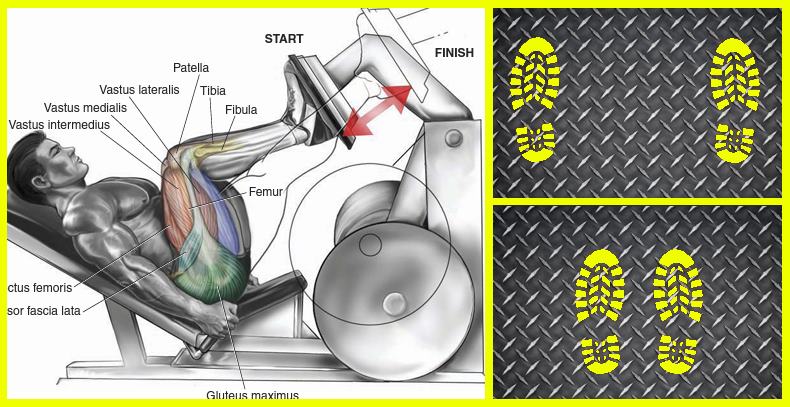Although the squat is undoubtedly the greatest exercise for overall leg development, the legs are a large muscle group that gets worked constantly throughout the day and therefore needs to be targeted with different exercises and lots of volume in order to grow – which is where the leg press machine comes in. The leg press is basically a squat performed in reverse and offers its unique package of benefits.
For one, it doesn’t put as much strain on your spine as squats and deadlifts do and many lifters welcome this opportunity to train their legs while allowing their backs to recover from the toll of heavy deadlifting.
But more importantly, the leg press is an extremely versatile machine that can be used to effectively hit different areas of your legs just by changing your foot placement.
You may not realize it, but your foot position on the leg press has a huge impact on which muscles receive the greatest stimulation, and making the best use of it will help you maximally develop your legs – besides, always doing it the standard way can get pretty boring after a while.
As you already know, the normal leg press foot placement involves placing your legs about shoulder-width apart and centrally on the leg press. This allows you to use equal pressure on each muscle group for overall leg development.
However, if you have muscular imbalances (who doesn’t) or simply want to prioritize the activation of certain muscles, you can achieve the desired specific results by simply switch things up a bit!
Next time you train your legs, try making these small changes in your foot placement on the leg press, to powerfully shift the exercise’s emphasis and improve your gains.
High vs. Low Leg Press Foot Placement
Placing your feet higher will help you focus more on the glutes and upper hamstrings and enable a stronger contraction in these muscles due to the increased degree of hip extension and flexion and the reduced range of motion around the knees. If glutes and hams are your priority, use high foot placement to exhaust them better.
On the other hand, setting your feet lower on the platform will make the move more challenging for your quads by reducing the degree of hip extension and flexion while increasing the range of motion around the knees. In this position, the glutes and hamstrings receive less activation, which is useful for guys with whose glutes and hams are a lot stronger than their quads.
Finally, placing the balls of your feet on the bottom of the plate with your heels in the air will shift the emphasis on your gastrocnemius. However, keep in mind that very low foot placement also brings greater stress on the knees, so you need to be careful if you have pre-existing knee injuries.

Wide vs. Narrow Leg Press Foot Placement
If you move your feet closer together while keeping them in the middle of the platform, you can transfer more of the load to your vastus lateralis or outer quad muscle, which is typically very hard to target, and also increase the engagement of your hip abductors.
If you’d rather hit your vastus medialis, i.e. inner quads, just spread your feet wider than shoulder-width apart. This will also stimulate the activation of your adductor magnus. In general, the wider your stance, the more focus will be put on the inner thigh and quad muscles.
Another incredibly effective but underused combination is the so-called frog stance: move your feet down on the platform, bring your heels close together and slightly point your toes out. This will help you work your quads as thoroughly as possible!

More often than not, getting good results is more about training smart than moving extraordinary amounts of weight. Using these techniques will help you load more of the resistance to a particular area and finally get the specific results you want!

